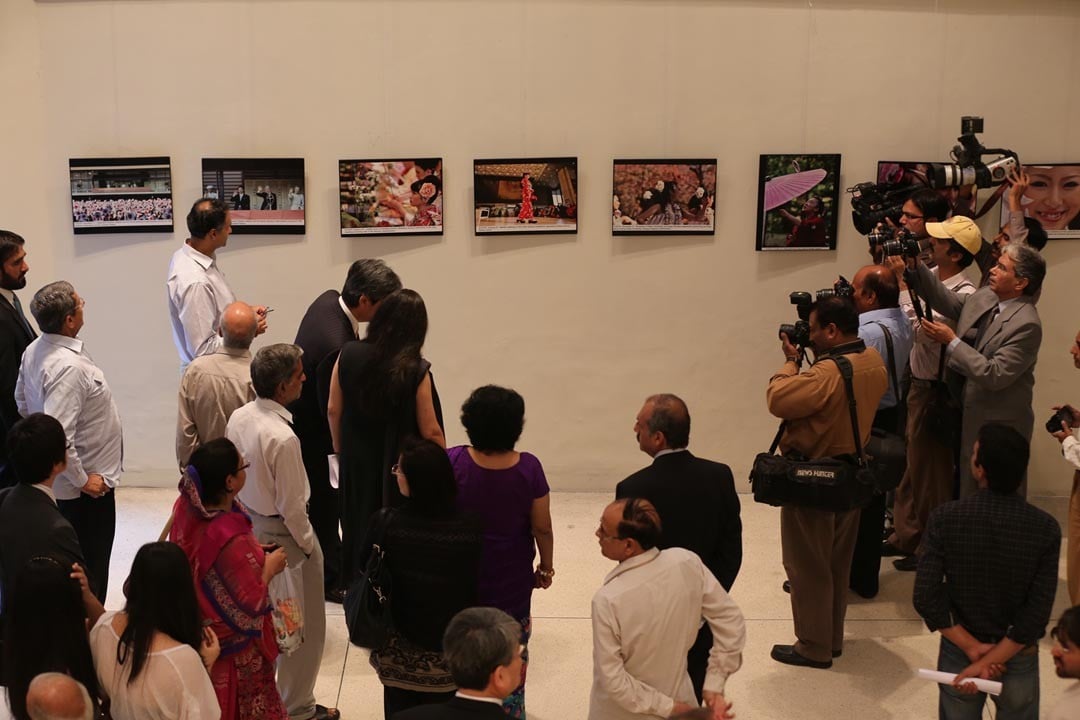

The relationship between an artist and gallery is analogous to that of a typical husband and wife. Occasionally, one of them suspects the other is cheating upon him or her. They stick together because there isn’t an option except to spend a celibate life. Yet, one of the partners yearns for a better choice/partner despite enjoying a firm and long marriage.
Likewise, artists are usually not happy with the galleries where they exhibit. Often, galleries too complain about the unprofessional and unfaithful attitude of artists. For an artist, the sore point in his dealing with a gallery is the sales’ commission which varies from place to place. For him, the gallery charging almost one third the price of his artwork is highly unjustified -- the gallery after all does not contribute to the artist’s living expenses, cost of art-making, packing, transportation and insurance of artworks.
On the other hand, galleries are not too happy with artists’ personal role in marketing and selling their work beyond the involvement of the gallery. In a clandestine scheme, artists exhibit their works at galleries but suggest to their prospective collectors not to purchase it from the show but get it directly from them after the display is over at a cheaper price. Also, while exhibiting at one gallery, artists often put up similar kind of works at other venues. The gallery thus loses the advantage of selling exclusively an artist’s latest works despite having spent a considerable amount of money on printing and postage of invites, phone calls, opening receptions, apart from its regular expenditure like gallery rent, maintenance charges, utility bills and staff salaries etc.
One feels there is no way out of this web because as soon as art leaves an artist’s studio for the gallery and subsequently reaches a buyer’s place, the rules of market take over. Unless one recognises the importance of business, frustrations of all sorts will remain among all participants in the business of art.
Like other spheres of life, the world of art operates between reality and idealism. We are aware the art piece is destined to be a commodity, a valuable item, but we are reluctant to admit this because it clashes with our romanticism with creative pursuits. We find it demeaning to associate money with matters of high art.
But this attitude left many artistes including musicians, actors, writers, and of course visual artists in dire straits. The general assumption that any discussion on money will embarrass and humiliate an artist stems from two sources. One, the concept that art must not be adulterated with monetary matters because as soon as an artist starts thinking in terms of future benefits, his creative self becomes slave to his base impulses.
The other factor is rooted in history where the artists were not free makers of objects or performers, out to market their products, skills or talents. Instead they were connected to a court, nobility and feudal lord that acted as the patron and provided all necessities for the livelihood of a creative person. They did not need to convert their creations into cash while engaged in the act of art-making. In our context, the presence of emperors, rajas and nawabs was sufficient to liberate the artists from the concerns of their daily bread and butter and they were able to concentrate on their art.
In the contemporary world, state and multinational organisations have replaced this position of past patrons but not so much in our surroundings.
In our society, it is the private collector who performs the task of a patron, and the gallery provides the link to search and reach an artist. Hence, gallery is indispensible. The institution of gallery is important not only for the artists but for the public, too, particularly that part which prefers to only look at art during exhibitions. Thus the gallery does not only help an artist earn his livelihood but also his name, fame and prestige.
The question is, does the gallery perform that job? Or, more pertinently, do we have such galleries in our midst? As is observed, most galleries are more concerned with the sale of works that comes to them rather than building meaningful, serious and longer relationship with an artist, and establishing him and promoting his work. For these establishments (usually upgraded frame workshops), the only value of an art work is its monetary worth. So it is more crucial to sell the work than ‘marketing’ the artist, forgetting the basic fact that if an artist’s fame spreads, naturally his prices will go up -- to the gallery’s advantage.
At the same time, these galleries do not believe in their other role -- of being a place that promotes art, culture and educates general public through exhibitions and publication of catalogues.
Thus these galleries and, not surprisingly, artists too treat art activity as a respectable, glamorous and glorified shopping-venture. It’s a grim scenario because the so-called serious galleries in our cities are facing multiple crises, including not finding local collectors. Conversely, Pakistani art is turning into a hot marketing product in the international art world. Not surprising information if one realises how that the notion of location is changing with passage of time.
The physical gallery space which we see today may not survive in the future, except being a site on internet, which buys, sells and exhibits its artists and is not situated in a specific region, neither specialises in the art of one nation, nor relies on the buyers from one country. In those coming years, the picture of an exhibition’s inauguration would be regarded as rare, vintage and nostalgic as we today view the footage of the first man on the moon.